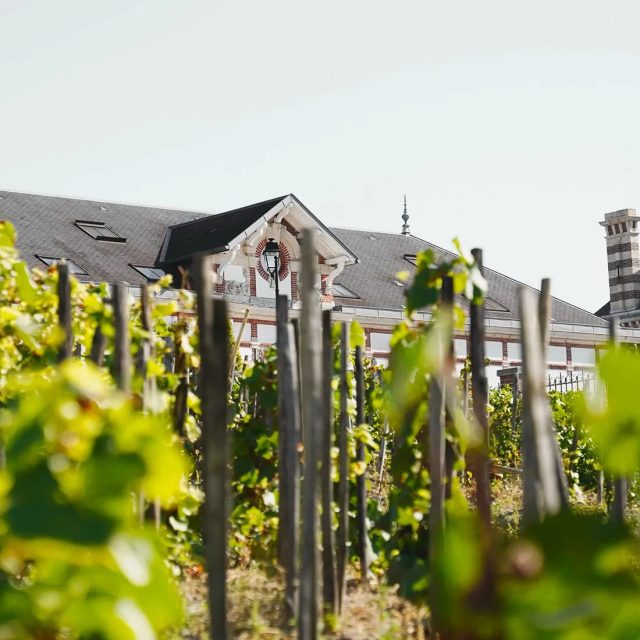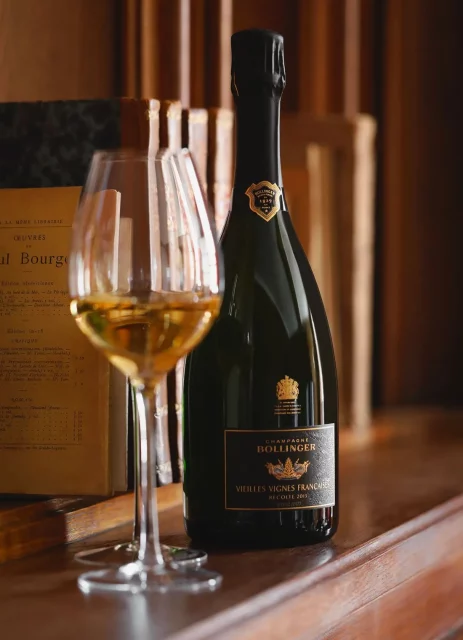This website uses cookies so that we can provide you with the best user experience possible. Cookie information is stored in your browser and performs functions such as recognising you when you return to our website and helping our team to understand which sections of the website you find most interesting and useful.
Why one of Champagne’s greatest cuvées could soon become extinct
One of the world’s most significant, collectible and expensive Champagnes may soon disappear, and there’s nothing its producer can do, Patrick Schmitt MW was dismayed to learn last month.

During a Bollinger press lunch in London on 15 November, attendees were given the privileged opportunity to try all of the producer’s Champagnes made from 100% Pinot Noir, which included its just-launched single-village blanc de noirs (PN AYC18), as well as its new single-site expression (La Côte aux Enfants 2013), and the brand’s rarest and priciest label: Vieilles Vignes Françaises (2012).
And it was this latter pure Pinot Champagne – which I’ve only sampled once before in 20 years of visiting, tasting and writing about Champagne – that I was told has an uncertain future.
But what is it about Vieilles Vignes Françaises that makes it so special? That relates to its sourcing, because it hails from a couple of tiny blocks of Pinot Noir near Bollinger’s HQ in Aÿ that are not only trained in a historic manner, but grown on their own roots, or franc de pied.
This means they are some of the only vines in Champagne’s 34,000 hectares that are not grafted onto American rootstocks, and therefore Bollinger’s plots represent an anomalous set of plants that are not protected against the root-eating louse – phylloxera – that destroyed almost all of Europe’s vineyards in the late nineteenth century.
It’s hard to say what impact ungrafted Pinot Noir vines have on taste and quality of the end product, but due to the nature of the vineyards, which are walled, low-yielding, and managed in an ancient, labour-intensive manner called provinage – in which the vines are layered – the base wine, and resulting Champagne, is remarkably powerful in flavour.
Indeed, according to Bollinger MD Charles-Armand de Belenet, these viticultural relics yield grapes that are “so concentrated” they produce a wine that is intensely “complex and dense,” and “like a fruit paste”.
However, sadly, he also told me, that he believes that this niche Champagne – which retails for around £1,500 – is likely to disappear.
“I don’t know if we will be able to taste Vieilles Vignes Françaises in a few years’ time,” he said, before admitting that the ungrafted vines used to make the Champagne are gradually dying due to phylloxera.
“It is slowly coming,” he said of the root-eating insect, which is causing the ungrafed vines to suffer declines in productivity by as much as 80%.
Referring to the two walled vineyards – which are Clos St-Jacques (0.21ha) and Clos des Chaudes Terres (0.15ha) – that are used to make the specialist Champagne, he said that the yields are “collapsing”, having fallen from around 3-4,000 bottles to “just 700 bottles” this decade.
Even in this year’s harvest, which was one of the largest ever recorded in Champagne, the plots for Vieilles Vignes Françaises produced no more than 1,000 bottles, while the 2012 vintage that we tasted comprised 2,100 bottles.

Although Charles-Armand said that Bollinger was doing everything it could to save these vineyards, it is hamstrung by the fact that no-one seems to know exactly how the franc de pied plants continue to produce a crop when phylloxera is rife in Champagne.
“Phylloxera killed all the vines around the plots, but they survived because there’s something about them that it doesn’t like – but we don’t know what, so we don’t know how to fight it [phylloxera],” he said.
Continuing, he stressed that it was unlikely to be the type of soil in the plots, which is a similar mix of clay and chalk as found in surrounding areas, but one theory for the vines historic survival, and current decline, relates to the climate in these walled vineyards.
It seems that while the protected nature of the enclosed sites can exacerbate the heat in summer, during the winter, the opposite is true, and the plots can be very cold, with deep frosts a regular occurrence.
According to Charles-Armand, temperatures below -5 degrees Celsius kill off the louse, and so cold winters have been a good way to “decrease the population” of the insect each year, allowing the vines to survive, despite the presence of phylloxera.
However, he said, “Now, with climate change, the phylloxera population is growing” – suggesting that winters are not cold enough to kill off the bug.
He also wondered if recent dry summers in Champagne have put the vines under further stress, and said that Bollinger keeps a permanent sward of grass in the vineyard to protect the soil against heat and drought, as well as build up the amount of organic matter in the plots.
Concluding on the survival of the source vineyards for the producer’s rarest Champagne – which he said was “an important topic at Bollinger” – he said that the newest ungrafted vines were dying first, as the louse likes to feed on “young roots”, while the oldest plants, with woody underground networks spreading over 20 metres, were proving more resilient.
Nevertheless, following recent analyses of the vineyards for Vieilles Vignes Françaises, he said that it appeared that numbers of the bug were on the rise.
“The last audit we had from the experts on ungrafted vines was quite worrying; phylloxera has always been there, but it was very limited, and now it’s growing,” he said.
In other words, one of Champagne’s rarest cuvées could soon become extinct.

